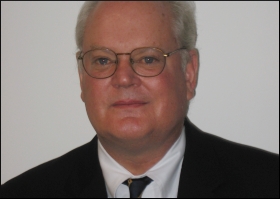|

|
Fair Competition for India
|
|

|
| Charles M. Seeger, Chairman and CEO, Financial Markets International (FMI) |
| Top Stories |
 |
|
|
|
Charles Seeger | 30 Dec, 2008
Charles Darwin taught us that competition is innate. Adam Smith taught us that competition is good. His 1776 book, The Wealth of Nations, argued that competition achieves efficiency in the marketplace; it cultivates an environment of innovation and progress. It makes us better.
In India, Adam Smith's lesson is being embraced. Newly incorporated companies have increased 20% in the past two years, with India rapidly becoming as highly competitive as any economy. A new spirit of Indian entrepreneurship exists. The global research firm, Evaluserve, predicts India will be the global leader in innovation by 2012, investing 2.5% of GDP in research and development, matching the United States, Japan, and Europe.
Competition, though, has one essential ingredient: fairness. A blind reliance on competition alone can be dangerous, especially when developing new markets. Unfettered, it can open the door for fraud, misrepresentation, and unethical business practices. Such may be occurring in the Indian derivatives market.
A heated competition is underway to determine the long-term success of the US Dollar/ Indian Rupee futures contract at the National Stock Exchange (NSE), MCX Stock Exchange (MCX-SX), and the Bombay Stock Exchange.
According to the former financial editor of the Times of India and award winning business journalist, Sucheta Dalal, the competition has turned ugly. Dalal suggests in her recent article, "War of the Currency Exchanges," that reports of unfair business practices are rampant. The NSE has placed Financial Technologies Limited of India (FTIL), the promoter of the MCX-SX (the NSE's chief rival), on a "watch-list," and until recently had given no justification for doing so. Ms. Dalal asserts that many observers believe this act by the NSE is retribution for FTIL's support for MCX-SX.
Now, allegations surface concerning a conflict of interest between the NSE and its primary technology provider, Omnesys Technologies. The NSE bought 26% of the Bangalore-based technology company just days prior to giving it sole programming interfacing rights for the NSE currency futures. To broaden the conflict, the NSE's Deputy Managing Director, Chitra Ramkrishna, is a member of the Omnesys' Board of Directors.
The NSE is clearly concerned about the MCX-SX's potential for growth. In comparing their beginnings, although the MCX-SX started a month later, the MCX-SX outstripped the NSE in daily volume, open interest by more than 7,000, and in value by more than 11 million Rupees. Today, the two Exchanges are almost even in volume and value traded in currencies.
Exchange competition is healthy for India. While typically one exchange wins and dominates, competition furthers the development of highly liquid markets. And such markets are valuable to exchange users that seek the most accurate price at the least transaction cost.
This was recently demonstrated in America and Canada. In 2000, the new Intercontinental Exchange (ICE) boldly challenged the venerable New York Mercantile Exchange (NYMEX), which had existed for more than a century and traded the exact same contracts ICE was planning to trade. Yet, because ICE offered users better price transparency, more efficiency, and lower costs through its tech-based trading operations, NYMEX was forced to adapt. NYMEX began developing an electronic trading system similar to ICE; it lowered its trading fees, and ultimately merged with the Chicago Mercantile Exchange to deepen its market.
Similarly, the Toronto Stock Exchange (TSE), for a century the dominant Canadian exchange, found its outdated trading system was routinely overwhelmed by high volumes, resulting in frequent trading freezes. Canadian companies such as BlackBerry began listing on the New York Stock Exchange. New competitors entered the market. Pure Trading, a Toronto-based alternative market, launched a new exchange that offered an attractive fee structure and new trading technologies. An alliance of Canada’s largest banks announced another exchange. Most analysts believed three exchanges in Canada would be too much. Yet the competition was powerful, and today the TSE uses sophisticated trading software, with lower trading fees, and has recaptured lost liquidity. The Canadian stock market is far more efficient and user-friendly because of the 2000 competition.
These contests illustrate how fair competition can work to benefit the marketplace. India would be remiss not to take note of these examples and reinforce the principles that are making India a global economic power.
Sucheta Dalal suggests that The Securities and Exchange Board of India (SEBI) should be alert to competition issues between the NSE and MCX-SX. She comments, "It is time that SEBI, the Forward Markets Commission, and the Reserve Bank of India put their heads together to decide how some basic issues relating to…competition will be handled."
Dalal is right. The onus is on Indian regulators to step in and promote not only competition, but fair competition. After all, fair competition provides users with more accurate prices, new products, lower transaction costs, and greater efficiency. A notion Adam Smith would be proud of and which India should follow.
Note:
The author, Charles M. Seeger, is the Chairman and CEO of Financial Markets International, a Washington, DC based economics and law consulting firm.
The views expressed by the author in this feature are entirely his/ her own and do not necessarily reflect the views of SME Times.
|
|
|
| |
|
|
|
|
|
|
|
|
|
|
|
|
|
|
| |
| Customs Exchange Rates |
| Currency |
Import |
Export |
US Dollar
|
84.35
|
82.60 |
UK Pound
|
106.35
|
102.90 |
Euro
|
92.50
|
89.35 |
| Japanese
Yen |
55.05 |
53.40 |
| As on 12 Oct, 2024 |
|
|
| Daily Poll |
 |
 |
| Do you think Indian businesses will be negatively affected by Trump's America First Policy? |
|
|
|
|
|
| Commented Stories |
 |
|
|
|
|
|
| |
|